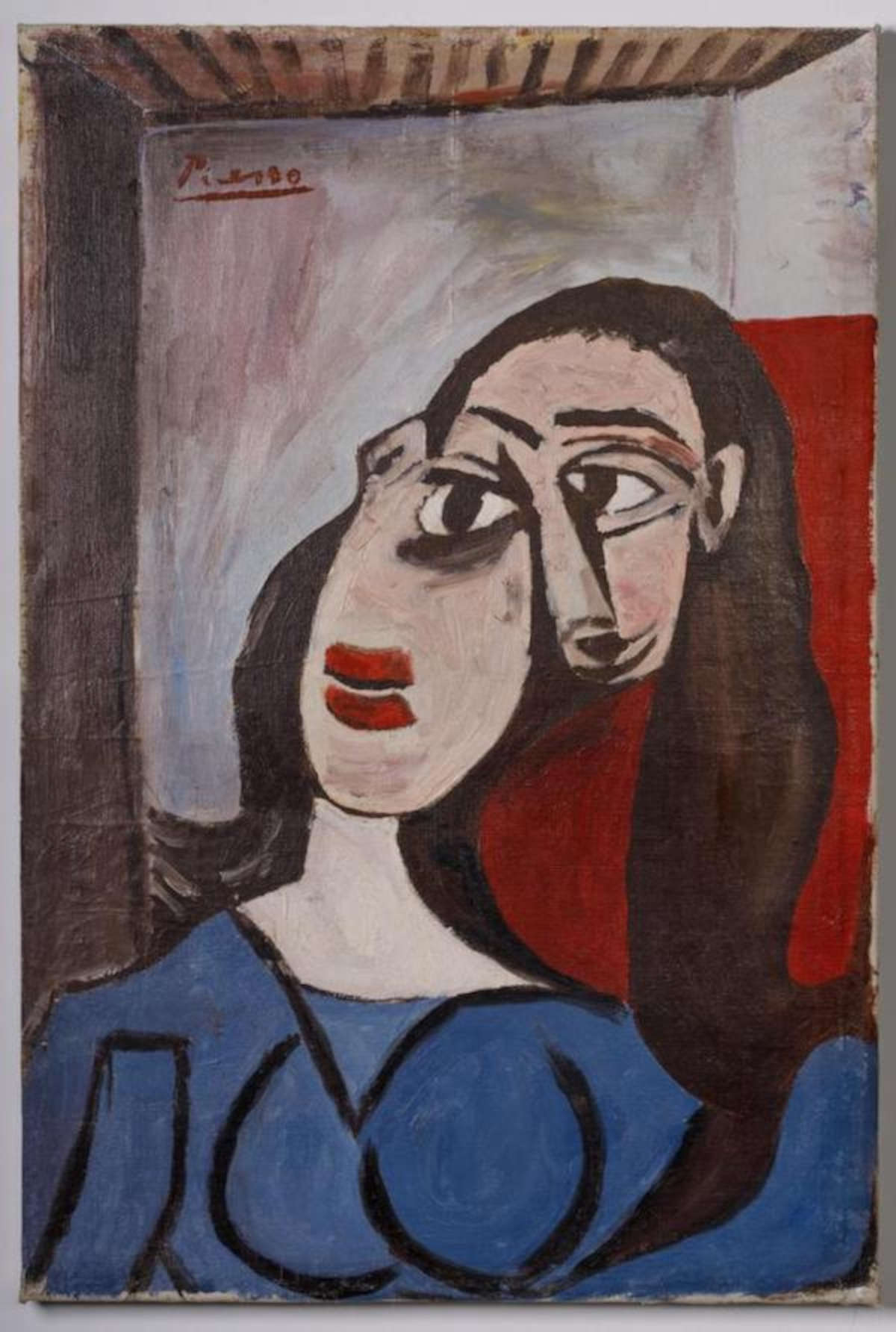On Sept. 30, as usually happens when faced with proposed attributions with a rocambolic history behind them, a good part of the Italian media reported the news of a rediscovered Picasso, recognized as such after decades in which it had remained on display in the living room of a junk dealer in Campania who was convinced it was a copy.
The story, reported first by Il Giorno, and then enriched in other articles with further details, in brief is this: a junk dealer from Pompei, in the 1960s, finds in Capri (in a dump, but other news versions speak of a villa) a rolled-up canvas, signed “Picasso.” He becomes convinced it is a copy, and hangs it in his living room for decades. Then in recent years doubt arises, particularly to the junk dealer’s eldest son, that that painting displayed in the living room for decades is indeed a Picasso, not a copy: and now a calligraphic expertise on the signature, would have confirmed that yes, it is indeed a Picasso, a Buste de femme Dora Maar. It is added that it would be from the 1940s, thus worth about 6 million euros. The family’s efforts are paying off. More detailed articles that have come out, for example in Wired, also note that the family’s first attempts to authenticate the painting were marked by a brief seizure by the Carabinieri on charges of receiving stolen property, but which fell on deaf ears, and a refusal to consider the work by the Picasso Foundation in Paris (“with more than 14,000 works in the catalog and about 700 attribution requests a day, the Foundation proves reluctant to examine the Italian case,” the article says). Facts that were followed by the interest of the Arcadia Foundation, and some experts, who pushed for the calligraphic expertise that has with full satisfaction confirmed the authenticity of the work. A work that, according to the articles that came out, would now be in a vault in Milan and which, despite its 6 million value, the family explains that it absolutely does not want to sell.


Limiting ourselves to purely factual, not artistic, data, this is again a story reported by several news outlets unfortunately without the appropriate insights. For one thing, the calligraphic expertise is by a professional (specializing in wills and documents, not works of art, which she occasionally deals with anyway) who sits on the technical and scientific committee of the Arcadia Foundation itself. Arcadia Foundation, which is based in Switzerland, in the canton of Ticino, was founded in 2020 and is focused mainly on the canton of Ticino, and precisely has among its ranks the technicians who in yesterday’s press launches defended the authenticity of the alleged Picasso.
Incidentally, the family had already claimed in 2019 in the press that they had an original Picasso in their living room, but the interested buyers demanded validation from the Picasso Foundation in Paris, following a study that, however, according to the reconstruction of the newspaper in which the news came out, cost “300 thousand euros,” a figure the family did not have. The appeal went all the way to Tg5. At that time, according to what was stated to the press at the time, some experts intervened who dated the painting to the 1960s, and proposed it to the Paris foundation. Reportedly, the foundation(Picasso Administration), for which authentications are commission-free (as stated on their website), chose not to consider the work, as reported by Wired, thus forcing the family to fall back on the Arcadia Foundation, which allowed authentication through calligraphic expertise. The articles these days also mention a painting from the 1940s, and no longer from the 1960s, without providing any further details about it. The logical leap is obvious to any reader: how can the advice of a foundation that does not deal with Picasso be equated or equalized with the only recognized guarantor of Picasso’s work?
Moreover, while we do not want to rule out the possibility that the painting may indeed be a Picasso (in the presence of additional elements, other than the calligraphic expertise of a professional framed in the foundation that is dealing with the work), it should be noted that another version of that composition, authenticated by Succession Picasso and dated 1941, already exists, and was exhibited in Canberra in 2019, as found by art historian Victor Rafael Veronesi.
With our best wishes for the family and the foundation to see their efforts repaid, at the moment, however, we cannot speak of a new Picasso, but of one family’s firm and ongoing struggle to have the painting that has hung in their living room for decades recognized as a Picasso. Indeed, a verdict, positive or otherwise, from the Parisian committee is missing. And for the umpteenth time, for all journalists and others: there is no scientific expertise, of any kind, capable by itself of proving the authenticity or otherwise of a work of art, in the absence of stylistic and documentary elements to corroborate the hypothesis.
Warning: the translation into English of the original Italian article was created using automatic tools. We undertake to review all articles, but we do not guarantee the total absence of inaccuracies in the translation due to the program. You can find the original by clicking on the ITA button. If you find any mistake,please contact us.